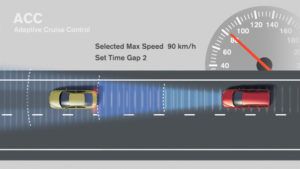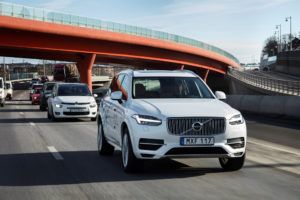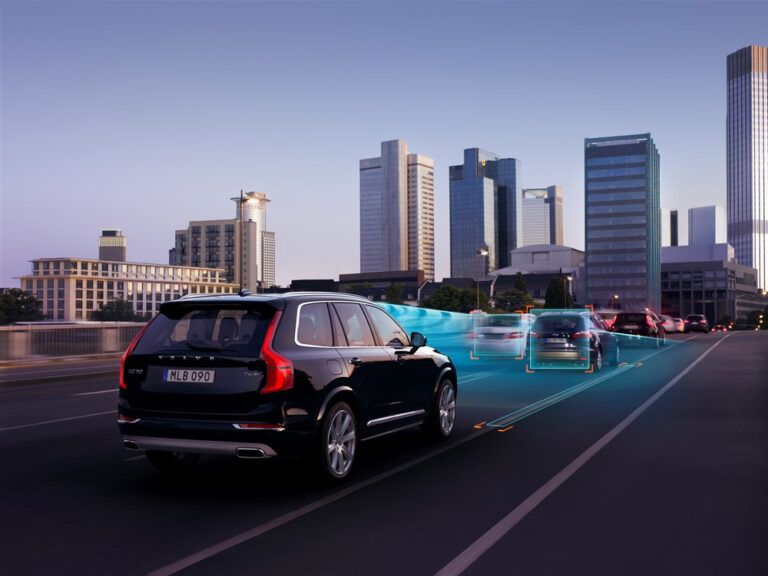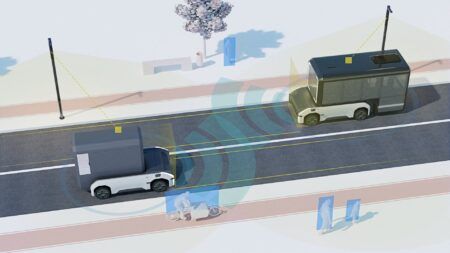A new study conducted by the US Department of Energy’s (DOE) National Renewable Energy Laboratory (NREL) and Volvo Cars shows that automated vehicle technologies can offer greater fuel savings than cars driving under total human control.
Vehicles’ fuel economy is typically measured in a laboratory setting, but that does not work if they are under a degree of automated control. This challenge motivated NREL to develop an objective approach for quantifying real-world fuel efficiency impacts from automated vehicle technologies and partnered with Volvo Cars to demonstrate the approach. The researchers made use of on-road data from Volvo vehicles driving around Gothenburg in Sweden, and compared fuel efficiency for cars that used Adaptive Cruise Control (ACC) to those that did not. The ACC system trialed is a partial automation technology that relies on cameras and radar sensors in a car to set its speed and distance from the vehicle in front.
 For the study, the automaker supplied data from more than 18,500 trips taken by employees and their family members operating similar Volvo vehicles within the designated analysis area. The test vehicles are all participating in Volvo’s ‘Drive Me’ project, which is part of its long-term autonomous vehicle program. NREL’s fuel economy calculation approach quantifies vehicle fuel efficiency in a wide variety of driving conditions both when ACC is active and when it is inactive. It then weights each condition-specific fuel efficiency by the amount of driving that occurs in each condition to obtain the overall fuel economy for manual versus ACC operation. Following this procedure, the researchers found the use of ACC resulted in a 5-7% drop in those vehicles’ fuel consumption when traveling in similar conditions.
For the study, the automaker supplied data from more than 18,500 trips taken by employees and their family members operating similar Volvo vehicles within the designated analysis area. The test vehicles are all participating in Volvo’s ‘Drive Me’ project, which is part of its long-term autonomous vehicle program. NREL’s fuel economy calculation approach quantifies vehicle fuel efficiency in a wide variety of driving conditions both when ACC is active and when it is inactive. It then weights each condition-specific fuel efficiency by the amount of driving that occurs in each condition to obtain the overall fuel economy for manual versus ACC operation. Following this procedure, the researchers found the use of ACC resulted in a 5-7% drop in those vehicles’ fuel consumption when traveling in similar conditions.
The innovative fuel economy calculation approach featured in this new study can be applied to simulation studies of hypothetical ‘what if’ future scenarios, as well as to data from the latest vehicle technologies operating in current traffic conditions. With automated vehicles possessing enhanced data collection and connectivity capabilities, the first-of-its-kind approach could further provide visibility into how on-road fuel economy evolves with changes in vehicle technology, penetration rates, and traffic impacts. The evaluation framework could be used to objectively quantify potential on-road fuel consumption impacts from vehicles with even higher levels of automated driving capability, and eventually, fully autonomous vehicles. The study findings are detailed in the paper ‘An Automated Vehicle Fuel Economy Benefits Framework Using Real-World Travel and Traffic Data’ published by the IEEE.
“One obstacle to research like this is limited availability of real-world travel data from automated vehicles,” said Lei Zhu, lead author and researcher in NREL’s Mobility, Behavior and Advanced Powertrains Group. “The partnership with Volvo Cars provided a rare opportunity to work with actual vehicle operation and energy consumption data in real traffic.”
Co-author from NREL, Jeffrey Gonder, noted, “Other considerations for automated vehicle fuel use include their types and penetration levels into traffic. It is possible for high automation penetration to improve overall traffic flow if it includes vehicle-to-vehicle (V2V) communication, enabling cooperative ACC (CACC). This research is important for stakeholders and policymakers who wish to measure technology impacts on transportation energy use, and for automakers who wish to get credit for potential fuel-saving features of automated vehicle technologies.”





